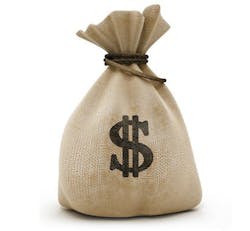Economists at the National Association of Home Builders recently analyzed the impacts of the expiration of the Bush-era tax cuts (or “Taxaggedon,” as tax policy experts call it) on home builders, and the outlook is not bright.
In its Eye on Housing blog, NAHB economists stated that if the 2001 and 2003 tax cuts — as well as the more recent payroll tax cuts and extended unemployment benefits — are allowed to expire at the end of the year, it would have “large consequences for housing and home builders.”
More specifically, home-building companies that are organized as pass-thru entities (which represents 80 percent of NAHB members), such as S Corporations or LLCs, would see their tax rates increase — from the bottom rate of 10 percent increasing to 15 percent to the top rate of 35 percent increasing to 39.6 percent, according to NAHB.
In addition, both capital gains tax rates (important for multi-family developers and C Corporations) and dividends rates (important for some S Corporations and C Corporations) would increase. Capital gains is scheduled to rise from 15 percent to 20 percent, while dividends rates would increase from 15 percent to ordinary income tax rates up to 39.6 percent.
The expiration of the 2001/2003 tax cuts would also mean:
- The top estate tax rate would increase to 55 percent and the exemption amount would fall to $1 million. For the nation’s family-owned home builders, the estate tax is a threat to keeping a multi-generational enterprise alive.
- On a macro level, the Congressional Budget Office (CBO) estimates that the total 2013 fiscal drag on the economy will be $560 billion. As a result, the CBO forecast for GDP growth in 2013 falls from 4.4 percent to 0.5 percent.
- A number of expiring tax law provisions would reduce after-tax income and home buyer and rental demand. For example, the marriage penalty returns for a significant number of taxpayers. The child tax credit falls from $1000 to $500 per child.
- The Pease limitations return, which would reduce the value of the mortgage interest deduction (MID) for taxpayers in high-cost areas. The Pease rule phases out itemized deductions for taxpayers above and below the commonly cited middle-class threshold of $250,000, thereby weakening the benefit of the MID.
For more on NAHB’s analysis, visit: http://tinyurl.com/busherataxcuts.
